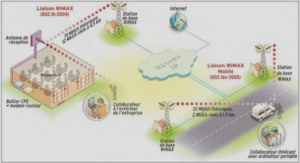Open green space
Open green space is a significant feature in urban areas, as it contributes to public health, recreation, amenities and property values through its location, accessibility, proximity and serviceability. This work examines the trends of green spaces in Nantes Metropolitan Area, which is the most important metropolitan area in population in the West of France. Nantes is the 6th biggest city in France with its 600.000 inhabitants and the Nantes city core has a population of 290, 000. The definitions and types as well as the benefits and functions of urban green space are discussed in detail and further elaborated in chapter two of the thesis. As the thesis discusses urban green spaces, it is essential to begin by defining what is meant by urban greening and green space. The urban greening discussion emphasizes that green spaces are no longer seen as ‘luxury goods’ for making cities more pleasant, but rather are part of the basic set of urban infrastructure, providing essential amenities and services to cities and towns (Nilsson, et al, 2007). It is generally recognized that green public areas provide comfortable and pleasant living environments for urban residents (Lawrence, 1999). Green space is diverse, varying in size, vegetation cover, species richness and environmental quality, proximity to public transport, facilities and services (Dahmann and Wolch, 2010). Public green space includes parks and reserves, sporting fields, riparian areas like stream and river banks, greenways and trails, community gardens, street trees, and nature conservation areas, as well as less conventional spaces such as green walls, green alleyways, and cemeteries (Roy and Byrne, 2012). This work will try to examine especially public green spaces which can be found in the city centers. The thesis starts with the definition of the problem linking with the importance of green spaces in cities in terms of sustainability and point outs the lack of green spaces in growing cities. Then it identifies the main concepts and definitions that are used in research which are related to creating urban green spaces in growing cities. It study 6 More than 50% of the world’s population lives in cities. For many cities in Europe, more than 70% of the population already lives in urban areas and a further increase in the number of people living in urban areas is expected to rise to almost 82% in Europe by 2050 (United Nations, 2012). High-density city has become a distinct characteristic of urban development, since the latter half of the 20th century witnessed the fiercest urbanization. In the European context, with the 18th century came the Industrial Revolution, population growth in cities and social tensions, all of which had impacts on the development and access to green spaces and use of urban landscapes (Jackson, 2013). Urban networks saw fierce competition, favoring ports over inland towns and the west and north of Europe over the Mediterranean. After the Middle Ages and especially in the 19th century, some cities in Europe such as Liverpool, Amsterdam and Antwerp experienced a certain urban development with the boom of manufacturing. Also, the growth of international trade affected the urban development and density of the cities in Europe, so population raised in the cities such as Bristol, Marseilles, Bruges, Hamburg and Nantes (Hohenberg, 2004). Cities are getting larger and bigger in terms of population and land use in the world. As more people live in urban areas, more built up area is created and the need for green spaces increases in the cities. The global population is growing by 1.8% a year and it will reach 5.1 billion, of which over 56 per cent of people in developing countries will continues with the research question and aim of research. After that, the case study in Nantes will help to go further with the research work. This work gathers and analyzes relevant information relating to the contribution of green spaces to cities in the framework of a city that was awarded as a European green capital; Nantes. 1.2 7 live in cities by 2030, whereas in developed countries it may well exceed 84 per cent by then (Roaf, 2010). A series of urban environmental problems has been brought in high-density urban environment, such as lack of public open space, population overload, traffic jam, deterioration of ecological environment, etc (Mina and Fangyinga, 2011). These problems such as lack of urban green space and low accessibility of parks influence the quality of the human living environment. As migration to urban areas has increased, the need for sustainable urban development is becoming crucially important. In an urban context this implies the creation of both resource efficient systems and good, engaging urban design for attractive cities with good quality of life. Urban sustainability has been related to urban forms which serve to the inhabitants’ livable spaces in the city (Jenks and Jones, 2010). The concept of quality of life is highly relevant when considering sustainable development. Since sustainability implies a balance between environmental, social and economic qualities, it can be said that the quality of life is affected by economic, social and environmental conditions, as well (Marshall and Banister, 2007). It is argued that urban parks and open green spaces are of a strategic importance for the quality of life of our increasingly urbanized society. Increasing empirical evidence, in fact, indicates that the presence of natural assets (i.e. urban parks and forests, green belts) and components (i.e. trees, water) in urban contexts contributes to the quality of life in many ways. Besides important environmental services such as air and water purification, wind and noise filtering, or microclimate stabilization, natural areas provide social and psychological services, which are of crucial significance for the livability of modern cities and the well being of urban dwellers (Chiesura, 2003). A park experience may reduce stress (Ulrich, 1981), enhance contemplativeness, rejuvenate the city dweller, and provide a sense of peacefulness and tranquility (Kaplan, 1983).
CONCEPTS AND DEFINITIONS USED IN RESEARCH
The study will concentrate on the importance of green spaces in urban areas, especially in the city centers where there may be a lack of them. Also the relationship with green areas and the elements of sustainability in urban planning will be searched on. To be able to provide more data for the case study, a literature review will be made. The definition, types, functions and benefits of green spaces will be analyzed. Also the concepts used in the process of planning urban green spaces such as public demand, public participation and heritage conservation will be discussed. Finally the findings will be examined in the case study of Nantes city which is a European Green Capital. Nantes has been awarded as the European Green Capital in 2013. The dissertation is not comparing European Green Capitals because European Green Capitals are too different in terms of actors, implementations and also for history. The study will be supported by a case study in Nantes which is chosen for the fact that it is a Green Capital City and also a fast growing city compared to many other French cities. The specific survey area is selected as “Ile de Nantes” which is a place located in the core of the city with many contemporary developments. It has also strong heritage value. This works does not either measure the livability/sustainability of the city of Nantes. Being aware of the qualities that sustainable cities require, this work just points out the importance of green space in living environment (both in physical and social terms) and the contributions that green spaces provide to the sustainability of a city in this respect. The concepts used in research are: • Urban green space types and definition • Benefits and functions of urban green spaces in cities • Public Demand, participation and heritage conservation issues in the planning process of urban green spaces • Green Space Management in a European Green Capital -NantesThus, the initial questions about the creation and maintenance of green areas in the urban core of large and growing metropolitan cities will be: • What is the contribution of urban green spaces to livability and sustainability? • What are the functions and benefits of green spaces in a city? • What is the role of public participation and heritage conservation in the planning process of urban green spaces? These questions will be answered within the literature review of this study. To understand the importance of green spaces in a city, the relationship between sustainability and green spaces should be analyzed. Research shows that green spaces have positive impacts on quality of life in cities, as shown in detail on chapter 2. As the population is increasing in the world, metropolitan areas are trying to be more sustainable to deal with the problems that occur with high-density of cities.




